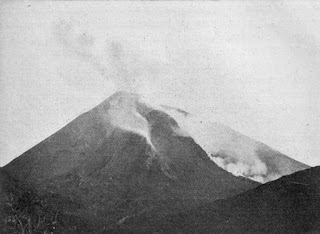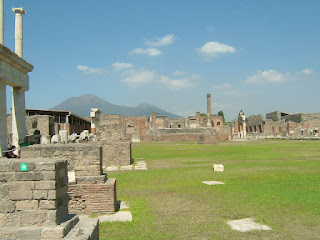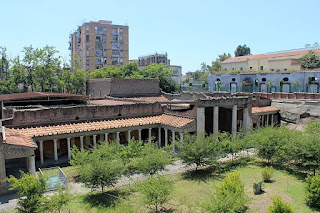First Italian to reach Wimbledon final
_(48522037542).jpg) |
| Matteo Berrettini has risen to No 6 in the world rankings |
Berrettini finished runner-up in the prestigious grass court tournament in South West London, losing in four sets to the world No 1 Novak Djokovic. It was his first appearance in any of the four Grand Slam finals, having previously reached the semi-finals at the US Open in 2019 and the quarter-finals at the French Open in 2021, where he also lost to Djokovic.
A week before the Wimbledon tournament began, Berrettini had won his first ATP 500 level final when he beat the British player Cameron Norrie in the final of the Queen’s Club Championships, also in London and also played on grass.
He proved a popular winner despite home support for his opponent and despite having knocked out another two British players in two-time former Wimbledon champion Andy Murray and Dan Evans on the way to the final.
Berrettini climbed to a career-high No 6 in the ATP world rankings in January 2022 after reaching the semi-finals of the Australian Open, where he was beaten by the same player who had denied him a place at the US Open final in 2019, the Spaniard Rafael Nadal.
Growing up in the part of the Monte Sacro quartiere of northeast Rome known as Conca d’Oro, Berrettini was destined for a sporting career from an early age.
.png) |
| Berrettini reached the semi-finals at Wimbledon in 2021 |
Matteo Berrettini’s first steps towards becoming a professional tennis player came at the Circolo Magistrati della Corte dei Conti, whose courts sit by the River Tiber just north of the fashionable Parioli district. There he was coached by Raoul Pietrangeli, a former player with a famous name but actually unrelated to Nicola Pietrangeli, who won the French Open twice and reached the semi-finals at Wimbledon in 1960.
From there he moved a short distance along the Tiber to the Circolo Canottieri Aniene club, where he joined up with Vincenzo Santopradre, whose achievements as a player were relatively modest but who has been Berrettini’s coach since 2011.
Berrettini made his ATP main draw debut at the Italian Open in 2017 and won his first world tour title the following year, at the Swiss Open Gstaad clay court tournament.
His major breakthrough year was 2019, when as well as reaching the US Open semi-finals he won ATP titles in Budapest on clay and in Stuttgart on grass, underlining the effectiveness of his all-court game. He climbed into the top 10 in the world rankings for the first time.
.jpg) |
| Berrettini at the Euro 2020 final with Sergio Mattarella and fencer Valentina Vezzali |
His Queen’s victory in London was another first for an Italian male player and his appearance in the semi-finals at Wimbledon, where he beat the Polish player Hubert Hurkacz, was the first by an Italian man since the aforementioned Pietrangeli in 1960.
A big football fan, Berrettini was invited as a guest of the Italian President Sergio Mattarella to the delayed final of the Euro 2020 tournament at Wembley just hours after his defeat against Djokovic in the Wimbledon final, arriving in time to see Italy beat the hosts, England, in a penalty shoot-out.
In 2022, Berrettini, who is engaged to the Croatia-born Australian player Ajila Tomljanović, became the first Italian man to reach the quarter-finals of all four majors when the advanced to the last eight of the Australian Open, and subsequently the first Italian man to reach the semi-finals of that tournament, the result elevating him to world No 6.
 |
| Piazza Sempione is the main square in Monte Sacro |
Monte Sacro, of which Berrettini’s Conca d’Oro neighbourhood is a part, is a residential suburb of Rome that wraps around the tree-lined banks of the Aniene, a tributary of the Tiber. Also known as Città Giardino, the area underwent substantial development in the 1920s and combines Baroque and medieval architectural styles. Sitting on slightly elevated land, it is one of the greenest parts of the city, with tree-lined streets, the Parco delle Valli, which has cycle trails that draw visitors from all over Rome, and the Aniene nature reserve, which straddles a large section of the river and feels like a rural oasis in the midst of a bustling city. There are also plenty of pizzerias, bakeries, wine bars, and local shops and the regular Conca d’Oro antiques market, which makes it an increasingly trendy area to live for young professionals.
 |
| The Foro Italico has been the home of the Italian Open tennis championships since 1935 |
The Foro Italico, home of the Italian Open tennis tournament where Matteo Berrettini made his ATP tour main draw debut in 2017, is a sports complex on the slopes of Monte Mario in Rome, on the northwestern fringe of the city centre. It was built between 1928 and 1938 as the Foro Mussolini. Inspired by the Roman forums of the imperial age, and dotted with classical statues, it is seen as a major example of Italian so-called Fascist architecture instituted by Mussolini. The purpose of the project was to secure for Rome the Olympic Games of 1940 but in the event the Games were cancelled because of World War Two. The Italian Open tennis tournament has been staged at the Foro Italico every year, with a few exceptions, since 1935.
Also on this day:
352: The death of Pope Julius I
1710: The birth of castrato opera singer Caffarelli
1948: The birth of football coach Marcello Lippi
1950: The birth of entrepreneur Flavio Briatore
1992: The birth of child actor Giorgio Cantarini

.JPG)
.jpg)


.jpg)



.jpg)


%20(2).jpg)



_(14770663784).jpg)
%20(1).jpg)

.jpg)

_(14770663784).jpg)


